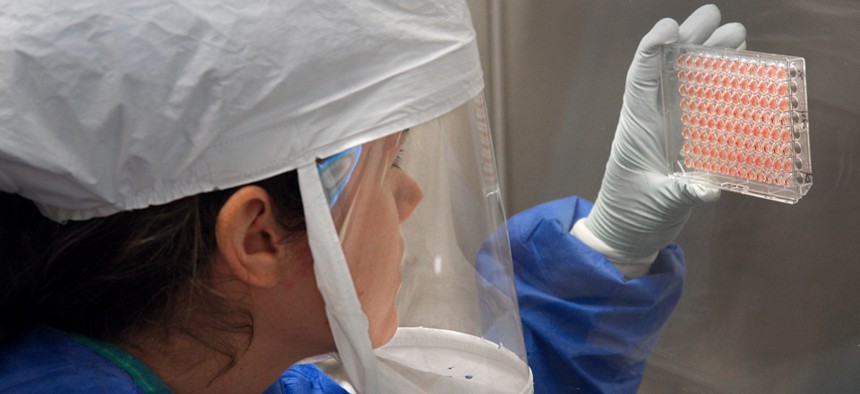The Pattern in CDC's Mishandling of Anthrax, Bird Flu and Botulism

A Centers for Disease Control scientist harvests a bird flu sample in 2013. Centers for Disease Control and Prevention
Multiple incidents reveal inadequate culture of safety.
An inadequate culture of safety led to a recent incident in which 84 Centers for Disease Control and Prevention employees could have been exposed to anthrax, the head of the agency told lawmakers Wednesday.
CDC last week acknowledged that potentially viable anthrax samples were transferred to an insufficiently secure laboratory after prematurely being declared sterile. No reported illnesses resulted, and it appears no pathogens were released, but the June 5 improper transfer of what could have been deadly material has raised alarms.
In the process of investigating the anthrax transfer, CDC noted four other incidents, including one earlier this year that involved mishandling of a pathogenic avian flu culture and a potential botulism exposure in 2006.
“What we missed was a pattern,” CDC Director Thomas Frieden told a House panel, explaining that previous incidents received individual responses. “It’s the lack of adequate pattern recognition that has led us until these last few weeks not to undertake the kind of comprehensive, sweeping change and improvement in our laboratory safety culture that we’re now implementing.”
Frieden has put a moratorium on transferring biological material out of CDC’s most biosecure labs until processes are reviewed; the moratorium will lift on a lab-by-lab basis, he said. The laboratory where the anthrax transfer occurred -- the Bioterrorism Rapid Response and Advanced Technology lab -- is closed until a series of steps are completed, including safety training.
“While we have scientists who are the best in the world at what they do, they have not always applied that same rigor that they do to their scientific experiments to improving safety,” he said. “If you work with something -- even if it’s a deadly microbe -- day in and day out for years, I think you get a level of familiarity that may lead to doing things that you really shouldn’t do.”
Part of CDC’s response has been to encourage reporting of potential or actual problems. Frieden said he is unaware of additional incidents of mishandled pathogens at CDC, but if there are more reports in the coming weeks and months, it will be a sign of the new system working.
Reports last week that smallpox samples were found at a Food and Drug Administration lab at the National Institutes of Health raised the issue of biosecurity across government.
The precise number of government labs handling highly pathogenic substances is unknown -- a longstanding concern for the Government Accountability Office. Since 2001, a number of agencies have launched programs and opened labs to study biological weapons and pathogens that could be used in an attack, GAO's Nancy Kingsbury said at the hearing.
“It’s just a fragmented program that had a very strong rationale at the beginning,” she said. “Right now, I think there’s perhaps a different rationale that might be articulated but nobody is in charge of doing that.”
GAO has recommended national standards and oversight for high biosecurity labs.



